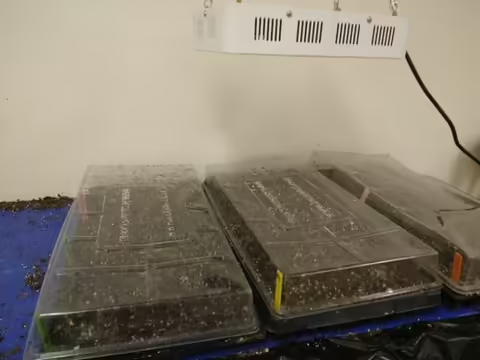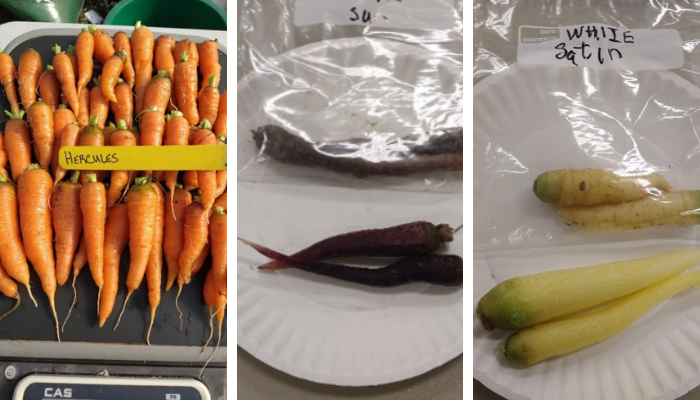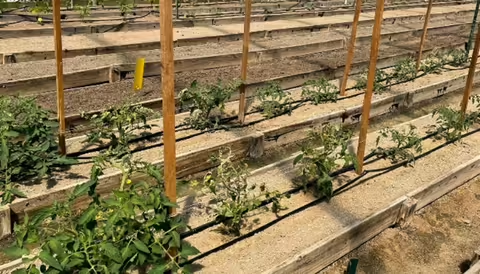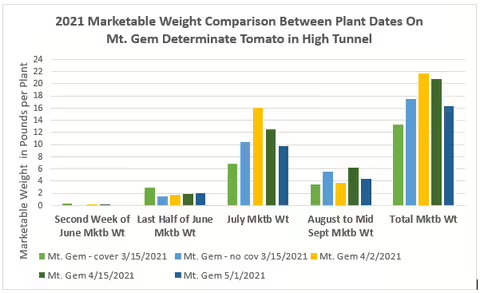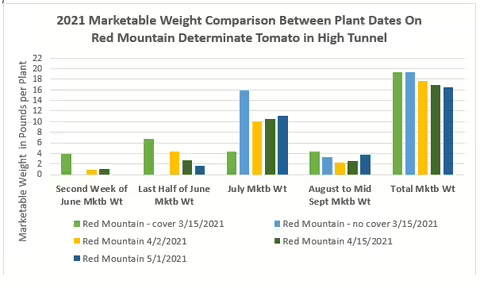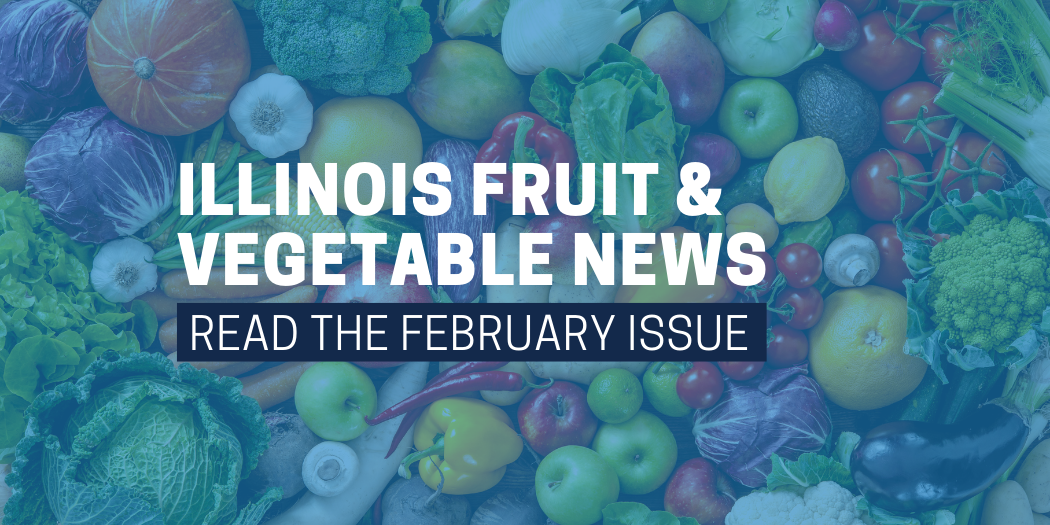
Farmer input needed for Extension Agriculture Needs Survey
University of Illinois Extension is looking for the input of the local agriculture community to help guide programming in the future. Please help by visiting go.illinois.edu/AgNeed to take a survey about the areas of agriculture you would like to see more Extension outreach. The survey is anonymous and open to all Illinois producers and agriculture industry professionals through March 2022. This is a statewide survey, but data will be separated by county and used locally to guide programming. It is divided into sections for row crops, specialty crops, and livestock production so you only have to fill out what applies to your farm. This survey will take 10 to 20 minutes to complete for each section. We greatly appreciate the feedback to better serve the agriculture community in your county. For more information contact:
- Katie Bell: 618-687-1727 or klbell@illinois.edu
- Nathan Johanning: 618-939-3434 or njohann@illinois.edu
- Bronwyn Aly: 618-695-2441 or baly@illinois.edu
St. Louis Metro East Regional Report
According to the U.S. Drought Monitor, the St Louis Metro East is free of drought going into the 2022 growing season. In addition, the region received significant rainfall on February 17, pushing soils to saturation, with minor ponding in low spots. Bare soil temperature at four inches is on a gradual climb, currently sitting at 44.7°F (Belleville) according to the Illinois Climate Network. Air temperatures have been all over the place, with lows well below freezing and highs in the low 60s.
All growers are encouraged to make comments on the proposed rule on agricultural water. The FDA is seeking comments on the proposed ag water rule from growers and others who are impacted by the proposed rule. Electronic or written comments must be submitted on the proposed rule by April 5, 2022. Be sure to reference your comments to a specific section number and make your comments as specific as possible.
Check your Illinois Pesticide Applicators License to make sure you know when it expires. If your license expired at the end of last year, you need to retest in order to purchase or use restricted use pesticides. Testing with the Illinois Department of Agriculture is available in person or proctored online. The Illinois Extension Pesticide Education Program is available for the most common categories as a self-paced online training course. Testing is separate from the online training, so you must sign up individually for testing. Check out the one-stop web page to sign up for training and/or testing. In-person testing-only sites are filling up fast, so don’t delay.
Elizabeth Wahle: 618-344-4230 | wahle@illinois.edu
Southwestern Illinois Regional Report from Waterloo
The past month has been fairly, typical winter. In early February, we had our first major snow. We had around 1 inch of sleet then followed by about 6 to 7 inches of very light, drifting snow. It remained very cold throughout this storm, with temps in the teens and 20s. That snow eventually melted, and we narrowly missed a winter storm last week that dumped a lot of snow for those north of us in the central part of the state. All we had from that was a light mixture of ice, sleet, and snow. Prior to this last system we did get significant rain with around 2 to 3 inches. This is the first heavy rain event we have had for a while and was welcomed to help replenish the soil moisture deeper in the profile. Now we are getting a few days of 60s before another storm system comes and brings rain and drops our temperatures with the forecast of another winter storm later this week.
Not a lot of activity out in the field going on aside from pruning of fruit out in the field. In the high tunnel, crops having been growing slowly, but doing fine with the protection. For those with a greenhouse, plants are getting started for early vegetable plantings, especially those that will be needing vegetable transplants for in high tunnels.
Please take a moment to take the Agriculture Needs survey for Extension at go.illinois.edu/AgNeeds. This feedback is very important to see and justify the needs of all our agriculture community, especially specialty crops. Your feedback helps us continue to provide resources like this newsletter and improve it to better help you!
Nathan Johanning: 618-939-3434 | njohann@illinois.edu
Southern Illinois Regional Report from Murphysboro
True to Punxsutawney Phil’s prediction, we got more winter, with ice and a snowstorm during the first week of February. The weather here in southern Illinois has been fluctuating from below freezing to the mid 60s. I can’t decide if I want to get started planting or build a snowman. Because of the cold weather and snow at the beginning of the month, we harvested the carrots from the high tunnel on January 31. There were seven different varieties, including Hercules (orange), Purple Sun (purple), Dragon (purple with orange center), and White Satin (white). All the varieties were photographed and weighed. We also did an informal taste test around the office.
We are also still trying to start some flowers under the grow light. We have several geranium and petunia seedlings sprouted and growing. Marigolds were also recently seeded and are already sprouting. When the weather stabilizes a bit, we will move the flower seedlings out into the high tunnel to finish growing out. I hope that everyone has a happy and safe start to the growing season!
Katie Bell: 618-687-1727 | klbell@illinois.edu
Dixon Springs Ag Center Regional Report
As with other locations across the state, the weather in February for far southeastern Illinois has encompassed three of the four seasons. Full on winter weather with single digit temperatures accompanied by ice, sleet, and snow; then warm springlike temperatures with lots of rain (oh, and the daffodils are blooming); and finally, some cool crisp days that felt like late fall. I pack my truck with a winter coat, gloves, hat, waders, shorts, flip flops, poncho; basically all of the essentials needed to get through a week of weather in southern Illinois.
Repairs continue to be made on the high tunnels, and we are ready to skin the middle tunnel when that perfect day presents itself (no wind for an hour). Side curtain mechanism replacements will get installed in the next couple of weeks as well. All of our dutch buckets and vertical stacks have been sanitized and irrigation fittings and sylenoids have been checked, so the hydroponic tunnel should be ready to put back into production the middle of March. Tilling, adding compost, and steaming are all on the schedule for the next month to get the raised beds prepped and ready for transplanting the first of April. Tomato and pepper seeds have germinated, and we are starting to get those potted up and grown on in the greenhouse. A wide variety of seeds for pollinator plantings have also been germinated. Bare root strawberry plants arrived last week, and those have been potted up and set out in the greenhouse to get a jump on growth before they get transferred to the vertical stacks in the hydroponic tunnel around mid March.
Don’t miss out on the multiple programming opportunities being offered across the state and online over the next couple of months. Also, if you haven’t taken the Ag Needs Survey, please carve out 15 to 20 minutes to fill out the survey at go.illinois.edu/AgNeeds and help guide the focus of future Extension programming and research.
Bronwyn Aly: 618-695-2441 | baly@illinois.edu
Brief overview of recordkeeping options to track produce sales and production
As we move out of February, plans and preparations for the main production season for many growers are well underway for the year. During the next month or so, there is still a bit of breathing room before the daily chores involved in production and marketing become all consuming. But one “chore” that shouldn’t be forgotten is reviewing last year’s sales and crop production records
- What crops had the highest profit margin?
- What sales avenue generated the most income?
- What crops do I need to plant more or less of this next season based on customer demand?
- Which planting date, variety, or fertility program yielded the best, and what can I modify this year to improve production?
All of these questions (and several more) have subsequent answers that will provide direction in planning for the next season. But, unless you can remember every detail of last season’s production and sales, which would be quite a feat, some form of recordkeeping would be beneficial to your farming enterprise.
The following printable PDF Recordkeeping Packet for Small-Scale Fruit and Vegetable Growers was created by FLAG, Farmers’ Legal Action Group, Inc. several years ago and is a very basic, straight forward system for those that feel more comfortable using a paper and pencil method of recordkeeping. Instructions within this packet also remind you that certain sections of information that you are tracking will be useful for tax and insurance (if needed) purposes.
In researching information for this article, I came across this presentation, Record Keeping Tools for Small Fruit and Vegetable Farms, by Hal Pepper, University of Tennessee Center for Profitable Agriculture, and Dr. Margarita Velandia, Professor, Agriculture & Resource Economics, University of Tennessee. The presentation provides reminders of the benefits of record keeping as well as outlines three options for maintaining records by using hard copy paper records, Excel spreadsheets, or software. While the links within the presentation on the Excel spreadsheets are broken, they still demonstrate how spreadsheets can be utilized in record keeping. The authors also list a few software options, like AgSquared, Quickbooks, Veggie Compass, and Quicken, and how these tools might be best used in farm operations.
Dr. Velandia also alerted me to a site that provides a more updated software overview for small farms and lists several newer products that may be a better fit for your record keeping needs. Many of the software products described on this site are designed for organic farmers, helping to keep records needed to maintain certification, but have the flexibility to meet the needs of a range of farming enterprises.
Veggie Compass is one of the resources listed above, and it gets mentioned quite often. In the following journal article, Silva, E.M., Claypool, R., Munsch, J., Hendrickson, J., Mitchel, P., & Mills, J. (2014). Veggie Compass: A Spreadsheet-based Tool to Calculate Cost of Production for Diversified Organic Vegetable Farmers. HortTechnology, Vol.24(3). https://doi.org/10.21273/HORTTECH.24.3.394, the authors provide a history of how Veggie Compass was created, how this Excel spreadsheet-based analysis and management software differs from other tools, and a fairly, in-depth description of how to use the program. Veggie Compass is not a record keeping tool but a program to analyze the records you are keeping and help make farm management decisions based on the analyses. While this article is several years old, the need and use of this type of tool is still relevant.
Farm recordkeeping can be a lot like a New Year’s resolution for exercising more, you know it’s something you should do as it will help to make a positive impact but finding the time to fit it in can be challenging. The best way to get more exercise is to find a routine that is right for you, and the same goes for recordkeeping. Whether you enjoy a platform accessible on multiple devices with linkable spreadsheets that provide daily analysis or a pocket notebook from you chemical salesman and pen from the local bank, find a system that will allow you to keep consistent, thorough records throughout the season. The sales and production recordkeeping options referenced above are just a few examples of the options available to growers to assist with keeping track of farm records and are not meant to be an endorsement for any particular product or system.
Bronwyn Aly: 618-695-2441 | baly@illinois.edu
Superior Oil applications from green tip to pink in apples
An annual reminder: Although new insecticides offer lots of benefits for protecting apple trees and fruit from damaging pests, some "old" pesticides still fill very important roles. One of those old products is superior oil, also called dormant oil, emulsifiable oil, and a few other terms.
Application of dormant oils prior to bloom – from green tip to pink – is very effective for killing overwintering eggs of European red mite and rosy apple aphid and overwintering immature San Jose scale on limbs and twigs of perennial fruit crops. These oils are emulsifiable – they disperse well in water. When sprays are applied to trees and the water evaporates, a very thin film of oil remains on the limbs and twigs – and on the eggs and scales of rosy apple aphid, European red mite, and San Jose scale. That film of oil blocks respiratory openings and results in suffocation of the creatures inside the eggs and scales. Application of superior oils prior to bloom is relatively inexpensive, very effective, and has little negative impact on natural enemies that help keep various pests in check later in the season. Many of the superior oils labeled for use on fruit trees are OMRI-approved and can be used in certified organic production, as well as in conventional production systems.
Emulsifiable oils are applied on a "percent-by-volume" basis. At green tip to half-inch green, they should be used at 2% by volume – 2 gallons per 100 gallons of water in the spray tank. Thorough coverage is essential for these applications to be effective. They suffocate only the eggs or scales that are covered by a thin film of oil after the water evaporates. If oils are used as late as the pink stage, most recommendations call for a lower percentage of oil in the spray mix – ½ to 1 percent by volume – to avoid plant injury. Other insecticides can be added to the spray tank to increase control of rosy apple aphid or San Jose scale (see Midwest Fruit Pest Management Guide 2021-2022), but oil alone is very effective. Most references recommend that superior oils not be applied if temperatures are forecast to drop below freezing in the next 48 hours.
Although "summer oils" can be used post-bloom to suppress populations of several pests, applications made after foliage has emerged can damage leaves if Captan or certain other fungicides are used before or with emulsifiable oils.
Kacie Athey: 217-244-9916 | kathey@illinois.edu
Keep your spears clean: Early season asparagus weed management
Now is the time we need to be planning our weed control strategy for our established asparagus plantings. The key to asparagus weed control, like any crop, is to start and stay clean. To do this, it often means spraying an herbicide before any spears have emerged. While the thought of anything green outside may seem like a distant dream, I have seen early emergence of asparagus as soon as the second week of March in southern Illinois. First, what weed is your weakness; which weed do you battle the most? Scout (once the snow melts) and see what weeds you have present. Often you may have some winter annuals, like henbit or chickweed, which are easy to manage; however, things like marestail and dandelions are more concerning. Marestail thrives in a no-till environment and seeds germinate well on the soil surface, which in asparagus is a common place to find it. Most of our marestail is resistant to glyphosate alone, and if left unchecked, can create quiet a mess later in the spring and summer. Think also about what you don’t see yet; what common summer annual weeds are traditionally a problem, such as Pigweeds/waterhemp, yellow nutsedge, ragweeds, or crabgrass.
Herbicide Management
Once you know what weeds you need to target, let’s look at the approach. In this article we are going to address early season weed management to get you clean, hopefully, up to the end of harvest. In a conventional system, this would be accomplished by applying a burndown herbicide application that would allow for two things: 1) kill any emerged weeds present; 2) prevent/delay any new weed emergence. The goal of this approach to weed pressure would be “manageable” as the end of harvest draws near. You probably will have some weeds in the field by the last harvest, but we will talk about managing those in a later article.
The 2022 Midwest Vegetable Production Guide has all of the specific details on products, but here are a few highlights.
- First, NO SALT! Salt is not listed in this guide for a reason. Asparagus can tolerate for a while, but you will do practically irreversible damage to the soil by using salt over time; just don’t do it.
- If we have no spears emerged, we can use products like Roundup, Gramoxone, and/or 2,4-D to kill emerged weeds. I would often use Roundup, and if I was concerned about marestail, dandelions, or other perennial broadleaves, I would add 2,4-D, probably 1-2 pts/A. Then with that I would add a residual product that will help to reduce weed emergence for the coming weeks of the season.
- There are multiple products you will find that are labeled for residual weed control. Some can be use before emergence early, at the end of harvest right after mowing, or either. I like to first look at those that can only be used before early, as this is your only chance to use them. A few examples would be Chateau, Prowl (pendimethalin products) or Spartan. Read the label as some specify spraying at a minimum time before emergence or first harvest. Products that can be used other times I will save for after harvest or directed sprays later in the season.
- Remember a part of our goal is to rotate and utilize different herbicide modes of action, especially in this perennial crop to avoid building up weed resistance. A sample preemergence application for an established asparagus field with general winter annuals, some marestail, and a known history of pigweeds might be: Roundup, 2,4-D, and Chateau.
- Try to spray on a sunny day with mild, late winter temperatures for the best herbicide uptake of emerged weeds. As always, refer to herbicide labels for details on rates and applications.
Non-Chemical Management
Looking beyond the jug, mulching with organic mulches, such as straw, can be a great organic or integrated approach, especially if you are on a smaller scale and/or you have a good source of clean straw. You can straw right over the rows before emergence, and the spears will grow right up through it. For weed control, I would target a minimum of 4 to 6 inch layer of loose straw. Mowing or hand weeding is always an option. It can be very handy to have row spacing such that a small riding mower can run between the rows, but on a small scale, we have also used a mulching deck push mower or string trimmer later in the season.
Hopefully, this will give you some good insights to starting your weed management in asparagus this season. Stay tuned for more details as the season progresses!
Nathan Johanning: 618-939-3434 | njohann@illinois.edu
Observational planting date study in high tunnel at DSAC on two determinate tomato varieties
One major reason growers utilize high tunnels for tomato production is the benefit of early season extension. The passive solar heating provided by a high tunnel structure allows for a much earlier spring planting date when compared to tomatoes transplanted in an open field planting. Without adding a supplemental heat source, high tunnel tomato growers in southern Illinois can generally transplant the first week of April. Tomatoes planted around the first of April are typically producing consistent, harvestable fruit by mid-June. While this is earlier than field planted tomatoes, is it possible to adjust the transplant date to obtain even earlier harvests within the high tunnel? Considering the amount of daylength available in March and the lack of a supplemental heat source, would we see a benefit from transplanting earlier than the first of April? This was the question we were hoping to answer with this observational planting date study conducted during the 2021 growing season in a high tunnel located at the Dixon Springs Agricultural Center in Simpson IL.
For this study, two determinate tomato varieties were selected, ‘Mountain Gem’ and ‘Red Mountain.’ ‘Mountain Gem’ requires 74 days to mature, while ‘Red Mountain’ is slightly earlier to mature, only requiring 72 days. Six plants of each variety were transplanted on four different dates: March 15, April 2, April 15, & May 1. One of the risks to planting early is the possibility of below freezing temperatures that can damage tomato plants. On the night of March 31/April 1, temperatures dropped below freezing. As this was a forecasted event, we decided to cover four plants from each March 15 plot with row cover. This left two plants of each variety uncovered and unprotected from the below-freezing temperatures. Damage to those plants was noticeable within two days of the freeze event and provided a good demonstration on the protective benefits afforded from the use of row covers. The scheduled transplant date of April 1 was held off until the next day, April 2, due to this cold event. Row cover was not needed at any other time during this study. All plants in the study were grown under our typical production practices for the high tunnel: double drip tape with weekly fertilizer applications, trellis weave, pruned to below first flower cluster, two feet spacing between plants. Typical harvest yield data was collected, including number and weight of number 1 and number 2 grade fruit, as well as number of cull fruits.
This photo illustrates the cold injury on the tomatoes from the March 31/April 1 freeze event. In looking at the row of tomatoes along the bottom of the picture, the large plant on the left was transplanted on March 15 and covered with row cover. The next two plants were also transplanted on March 15 but were left uncovered. And then the next two plants were transplanted on April 2. The injury to the uncovered plants appears to have set them back almost two weeks, as they are more comparable in size to the April 2 transplants. The picture was taken on April 12, 2021.
The following two charts show the marketable weight per plant harvested from each of the planting date plots for each variety. It should be noted that in each chart, there are two 3/15/2021 entries and the second one in each chart represents the uncovered plants from the March 15 plant date.
From Chart 1, we see that very little fruit was harvested during the second week of June from the March 15, April 2, and April 15 plant dates, and no fruit was harvested from the March 15 with no cover or the May 1 plant dates. Slightly more fruit was harvested in the last half of June from the March 15 plant date and all other plant dates had harvestable fruit. All plant dates yielded more in the month of July, with the April 2 plant date having the highest yields. Harvest yields from all plant dates decrease quite a bit late in the season from August to mid-September. As this was an observational trial and not replicated, trends can be seen but no significant differences can be assigned to any particular plant date. The yield trends for ‘Mountain Gem’ variety would indicate that April 2 is the optimal planting date, however the March 15 plant date did provide an additional pound per plant more during the last half of June harvest period.
‘Red Mountain’ harvest data shows a different trend than that of ‘Mountain Gem.’ From Chart 2, higher marketable yields can be seen from the March 15 plant date compared to all the other plant dates for all harvests in June. Roughly 50% of the total marketable weight from March 15 planted ‘Red Mountain’ was harvested during the last three weeks of June. Conversely, the cold injury to the March 15 plants that were not covered can be seen in the harvest data, as no fruit was harvested from those plants in the month of June. As ‘Red Mountain’ is a slightly earlier maturing variety than ‘Mountain Gem,’ the April 2 plant date tended to have slightly higher yields during both harvest periods in June, but did not yield nearly as well in July or the remainder of the season. The yield spike in July for the March 15 plant date with no cover is likely attributed to delayed flower set and fruiting caused by the cold injury.
Observations from this study would indicate that we can adjust our planting date to obtain marketable yields during the early part of June. Proactive precautions (row cover or supplemental heat source) should be taken to prevent cold injury to early transplants. ‘Red Mountain,’ or other earlier maturing varieties, can be planted in mid-March followed by ‘Mountain Gem,’ or other main season maturing varieties, being planted the first of April. Just as in open field plantings, staggering the transplant date as well as the variety can allow for both an earlier market timeslot and provide high quality fruit throughout the growing season. This study also illustrates the importance of variety selection and all the factors to consider when making selections to match your market outlets.
Bronwyn Aly: 618-695-2441 | baly@illinois.edu
Boring January leads to more interesting February
January was colder and drier than normal in Illinois, but winter weather kicked into high gear in February.
Temperatures have averaged around 22.7°F through January and the first half of February, about 2.7° below the 1991-2020 normal. Average temperatures for 2022, so far, have ranged from the high teens in northern Illinois to the low 30s in southern Illinois, between 1 and 4 degrees below normal. High temperatures reached into the mid- to high 60s in southern Illinois multiple times in January and February, including 69 degrees in Pope County and Alexander County. Meanwhile, nighttime low temperatures have frequently dipped below zero in central and northern Illinois this year so far, including lows of -22 degrees in Kane County and -20 degrees in Jo Daviess and Carroll counties.
Precipitation statewide through January and February is a bit of a mixed bag. Total precipitation so far this year ranges from less than an inch in parts of northern Illinois to over 5 inches in far southern Illinois. Most of northern Illinois has been half an inch to 1 inch drier than normal so far in 2022, while central and southern Illinois have been within 1 to 2 tenths of an inch around normal precipitation so far.
Snow In January: We had enough cold air in the region, but the air was generally too dry to amount to much snowfall. January snowfall totals ranged from over 10 inches in parts of northern Illinois to less than half an inch in central and southern Illinois. However, a large winter storm brought much heavier and long-lived snowfall to a large swath of Illinois in the first week of February. Snowfall totals ranged from around 3 to 4 inches in southern Illinois and far northwest Illinois, to over 15 inches in central Illinois. Most areas near Interstate 55, all the way from the Metro East to Chicagoland, picked up a good 6 to 10 inches of snow or more from that single system.
Drought: The dry conditions in northern Illinois so far this year have added to existing precipitation deficits from 2021. The latest version of the US Drought Monitor released February 17 shows moderate drought stretching from Henderson County in western Illinois to Lake County in northeast Illinois, quite a large expansion from our drought minimum back in October. Although drought conditions haven’t worsened considerably since the fall, the lack of significant winter precipitation and heavy snowpack in northern Illinois has not recharged soil moisture and groundwater to the degree we would like to see by this time in the season. Although conditions remain dry for the northern third of the state, a normal to wetter than normal spring would likely improve sufficiently to avoid moisture stress issues come this growing season.
Outlooks: The latest outlooks from the Climate Prediction Center for March show much higher chances of warmer and wetter conditions statewide. This pattern holds for climatological spring outlooks as well, those from March through May, with highest chances of warmer and wetter conditions across Illinois. If these outlooks verify, it would mean a higher risk of excessively wet conditions and possible flooding in southern and parts of central Illinois but would also be greatly beneficial to reducing drought concerns in northern Illinois and southern Wisconsin.
Trent Ford, Illinois State Climatologist: 217-244-1330 | twford@illinois.edu
Less Seriously
I received a few really close guesses for “What’s in my pocket?” from last month’s issue of the newsletter, but nobody earned the title of best guesser in all of IFVN land. For the inquiring minds, last month I had a pair of Felco pruners in my pocket.
We discovered this oldie but goodie from a past issue of the IFVN Vol. 19, No.18 and just had to share again.
FOR LEXOPHILES (LOVERS OF WORDS)
- A bicycle can't stand alone; it is two tired.
- A calendar's days are numbered.
- A boiled egg is hard to beat.
- He had a photographic memory which was never developed.
- Santa's helpers are subordinate clauses.
- She was only a whisky maker, but he loved her still.
- A rubber band pistol was confiscated from algebra class because it was a weapon of math disruption.
- A dog gave birth to puppies near the road and was cited for littering.
- Atheism is a non-prophet organization.
- I wondered why the baseball kept getting bigger. Then it hit me.
- A small boy swallowed some coins and was taken to a hospital. When his grandmother telephoned to ask how he was, a nurse said, "No change yet."
Upcoming Events
2022 University of Illinois Extension Small Farms Winter Webinar Series
This free weekly Zoom series, held on Thursdays from noon to 1 p.m., covers topics relevant for new and established farmers throughout Illinois. Each week, a topic will be presented that will help you adopt new practices, start growing a new crop, get started in livestock, and find out about impactful University of Illinois research. To register and for more information, please visit go.illinois.edu/smfarmswebinarseries
- February 24: High Tunnel Winter Greens Research, Bronwyn Aly
- March 3: Introduction to Vermicomposting, Crystal Stevens
- March 10: Mushroom Production, Michael Hatfield
- March 17: Getting Started with Backyard Swine, Katie Bell
- March 24: Growing Great Grapes, Grant McCarty
33rd Annual MOSES Organic Farming Conference: February 24-26 in La Crosse, Wis.
The event brings together farmers, researchers, and agriculture professionals to learn the latest organic production practices and build a supportive community of resilient organic, sustainable, and regenerative farms. See mosesorganic.org/conference for registration information, workshop descriptions, and more details. To request more information about the conference or a mail-in registration form, call 888-90-MOSES.
Annie’s Project Training Program: Six weekly sessions starting February 24, Jackson County Extension Office, Murphysboro
Annie's Project brings women together to learn from experts in production, financial management, human resources, marketing, and the legal field. The program covers many topics dedicated to strengthening women's roles in modern farm and ranch enterprises, including business plans, crop insurance, diversifying farm operations, estate planning, farm appraisal, and much more. Interested participants can learn more or register at go.illinois.edu/anniesproject2022 or by contacting Katie Bell at 618-687-1727 or klbell@illinois.edu
University of Illinois Extension Fruit and Vegetable Specialists
Extension Educators – Local Food Systems and Small Farms
- Bronwyn Aly: Gallatin, Hamilton, Hardin, Pope, Saline, & White Counties | 618-695-2441 | baly@illinois.edu
- Katie Bell: Franklin, Jackson, Perry, Randolph, & Williamson Counties | 618-687-1727 | klbell@illinois.edu
- Sarah Farley: Lake & McHenry Counties | 847-223-8627 | sfarley@illinois.edu
- Nick Frillman: Woodford, Livingston, & McLean Counties | 309-663-8306 | frillma2@illinois.edu
- Zachary Grant: Cook County | 708-679-6889 | zgrant2@illinois.edu
- Doug Gucker: DeWitt, Macon, & Piatt Counties | 217-877-6042 | dgucker@illinois.edu
- Erin Harper: Champaign, Ford, Iroquois, & Vermillion Counties 217-333-7672 | harper7@illinois.edu
- Grace Margherio: Jackie Joyner-Kersee Center, St. Clair County | 217-244-3547 | gracem@illinois.edu
- Grant McCarty: Jo Daviess, Stephenson, & Winnebago Counties | 815-235-4125 | gmccarty@illinois.edu
- Katie Parker: Adams, Brown, Hancock, Pike & Schuyler Counties | 217-223-8380 | keparkr2@illinois.edu
- Kathryn Pereira: Cook County | 773-233-2900 | kpereira@illinois.edu
Extension Educators – Horticulture
- Chris Enroth: Henderson, Knox, McDonough, & Warren Counties | 309-837-3939 | cenroth@illinois.edu
- Richard Hentschel: DuPage, Kane, & Kendall Counties 630-584-6166 | hentschel@illinois.edu
- Andrew Holsinger: Christian, Jersey, Macoupin, & Montgomery Counties | 217-532-3941 | aholsing@illinois.edu
Extension Educators – Commercial Agriculture
- Elizabeth Wahle: Fruit & Vegetable Production | 618-344-4230 | wahle@illinois.edu
- Nathan Johanning: Madison, Monroe, & St. Clair Counties | 618-939-3434 | njohann@illinois.edu
Campus-based Extension Specialists
- Kacie Athey: Entomology | 217-244-9916 | kathey@illinois.edu
- Mohammad Babadoost: Plant Pathology | 217-333-1523 | babadoos@illinois.edu
The Illinois Fruit and Vegetable News is a production of University of Illinois Extension and provides timely, research-based information that commercial fruit & vegetable growers can apply to benefit their farming operations.
Address any questions or comments regarding this newsletter to the individual authors listed after each article or to its editors, Nathan Johanning, 618-939-3434, njohann@illinois.edu or Bronwyn Aly 618-695-2441, baly@illinois.edu.
To receive or be removed from email notification of new postings of this newsletter, contact Nathan Johanning or Bronwyn Aly.
